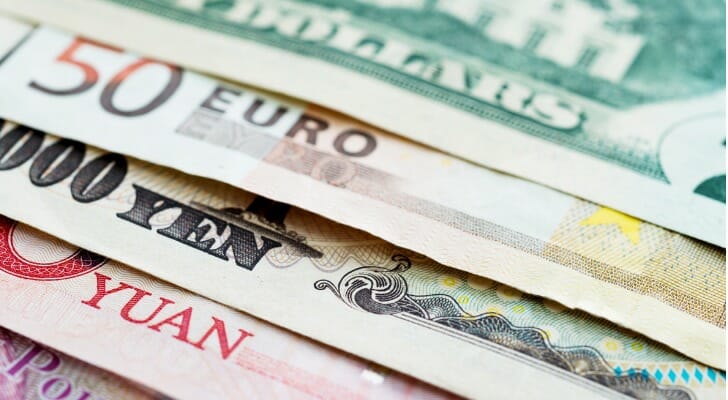Investing in currencies, also known as forex (foreign exchange) trading, can be both exciting and challenging. It involves buying and selling currencies with the aim of profiting from changes in exchange rates. Here’s a detailed overview of how currency investing works and how traders can make money from it:
Understanding Exchange Rates:
Exchange rates represent the value of one currency relative to another. They are determined by supply and demand dynamics in the foreign exchange market, which is one of the largest and most liquid financial markets in the world. Exchange rates fluctuate continuously due to various factors, including:
Economic Indicators: Economic data such as GDP growth, inflation rates, employment figures, and trade balances can influence currency values. Strong economic performance typically leads to appreciation of a country’s currency, while weak economic data may cause depreciation.
Interest Rates: Central banks adjust interest rates to control inflation and stimulate economic growth. Higher interest rates generally attract foreign investment, leading to an appreciation of the currency. Conversely, lower interest rates may lead to depreciation as investors seek higher yields elsewhere.
Geopolitical Events: Political instability, conflicts, elections, and trade tensions can affect investor sentiment and currency values. Uncertainty often leads to volatility in exchange rates as traders react to news and developments.
Market Sentiment: Investor confidence and risk appetite influence currency movements. Positive sentiment towards a country’s economy or political stability can drive demand for its currency, while negative sentiment can lead to selling pressure.
Speculation: Traders buy and sell currencies based on their expectations of future exchange rate movements. Speculative trading can amplify short-term fluctuations in exchange rates, creating opportunities for profit.
How Currency Trading Works:
Currency trading takes place in the forex market, where participants, including banks, financial institutions, corporations, governments, and individual traders, buy and sell currencies. The forex market operates 24 hours a day, five days a week, allowing traders to engage in round-the-clock trading.
To trade currencies, investors typically use a broker, which provides access to the forex market and trading platforms. Traders can choose from various trading strategies, including:
Spot Trading: In spot forex trading, currencies are bought and sold for immediate delivery at the current exchange rate. Spot trading is the most common form of currency trading and offers liquidity and flexibility for traders.
Forward Contracts: Forward contracts involve agreements to buy or sell currencies at a specified price for delivery at a future date. Forward contracts are used for hedging against currency risk or speculating on future exchange rate movements.
Futures and Options: Currency futures and options are derivative contracts that allow traders to speculate on or hedge against exchange rate movements. Futures contracts obligate the buyer to purchase or sell a currency at a predetermined price and date, while options provide the right, but not the obligation, to buy or sell currencies at a specified price within a set timeframe.
Making Money in Currency Trading:
Currency traders aim to profit from exchange rate movements by buying currencies they expect to appreciate and selling currencies they expect to depreciate. Here are some common ways traders make money in currency trading:
Capitalizing on Exchange Rate Trends: Traders analyze technical and fundamental factors to identify trends in exchange rates and take positions accordingly. They may use technical analysis tools, such as chart patterns and indicators, to identify entry and exit points.
Carrying Trades: In carry trades, traders borrow currencies with low interest rates and invest in currencies with higher interest rates to profit from the interest rate differential. Carry trades can generate returns from both interest rate differentials and exchange rate movements.
Arbitrage: Arbitrage involves exploiting price differences between currency pairs or markets to profit from inefficiencies. Traders may engage in triangular arbitrage, where they simultaneously buy and sell three currencies to exploit discrepancies in exchange rates.
Hedging: Corporations, investors, and financial institutions use currency hedging strategies to mitigate currency risk and protect against adverse exchange rate movements. Hedging involves taking offsetting positions in the forex market to reduce the impact of currency fluctuations on portfolio returns.
Algorithmic Trading: Algorithmic trading, also known as automated trading or algo trading, involves using computer algorithms to execute trades based on predefined rules and parameters. Algorithmic trading can capitalize on market inefficiencies and execute trades at high speeds.
It’s important to note that currency trading carries risks, including market volatility, leverage, geopolitical events, and economic factors. Traders should conduct thorough research, manage risk effectively, and use proper risk management techniques to protect their capital and maximize returns in the forex market. Additionally, traders should stay informed about global economic developments, central bank policies, and geopolitical events that can impact currency values and exchange rates.

